|
If you absolutely must have a miscarriage, I recommend writing about it in The New York Times. It's a great way to memorialize the baby who got away, and you might get an extremely cute illustration out of it.
Thank you to Roberta Zeff for the opportunity to share my story. If you are in need of a Jizo, you can get one here.
5 Comments
Gudetama is the latest kawaii character from Sanrio, that Japanese culture factory that rolls out cuteness as fast as Taylor Swift goes through boyfriends. A play on “gude gude,” the Japanese term for lazy, Gudetama is an egg who “lacks spunk.” This is an understatement, because Gudetama lacks almost everything: joy, empathy, pants. Unlike Hello Kitty, My Melody, and other chipper, cheerful characters that danced across your fourth-grade pencil case, since 2013 Gudetama has been complete and unapologetic dick prone to dramatic sighs and stealing people’s smartphones to upload videos of himself to Instagram. Unsurprisingly, he’s a hit with Millennials, who relate to his nihilism, laziness, and fondness for social media. (He has 672,000 Twitter followers. I, a tax-paying member of productive society, have 12.)
Gudetama’s apathy is showcased in a series of minute-long Internet cartoons in which the listless egg lounges around on plates of food, huddling under a bacon blanket and complaining about everything from the temperature of the room to the fact that he “can’t even.” His human companion, a nameless man at the dinner table whom we only see from the back, is forever scolding Gudetama for his general worthlessness and telling Gudetama to put on eggshell underwear. But the egg persists in being a self-absorbed little shit. Each short showcases one of Gudetama’s Very Important Problems (will he reach the remote?), but all invariably end with a full-grown man named Nisetama-san, “Mr. Fake Egg,” in full-body orange spandex dancing humorlessly through the closing credits like Buffalo Bill in his lady suit. So what’s the appeal? Why should anyone feel endeared to this gelatinous turd high in cholesterol but low in moral fiber? It’s easy to blame the Millennials for this, but really, I think Gudetama speaks to the squishy, vulnerable heart of everyone old enough to doubt that Santa isn’t real, the soft-boiled yolk of the soul that fears the melting ice caps and the looming threat of zika (not to mention the high cost of lattes) and longs to return to the warm, isolated shell of youth. With the world as it is, what’s there to be excited about? Who can feel optimism over ever finding love, happiness, or even nice-fitting jeans? “I wanna go home,” Gudetama says. “But you haven't even gone anywhere?” replies his human companion. Leave it to an egg--even younger than a baby--to strike at the core of adulting: you wake up, you go to work, moving but never advancing, nostalgic for “home” and a time in your life when dreams meant something and adventures weren’t rare. It is unclear if Gudetama’s human companion ever eats him. Is Gudetama a single egg or all eggs in succession? Are we, as people, prone to the same innate hopelessness? The larger, human metaphor of Gudetama is clear but lies not in the spoiled naked egg scratching his salmonella-dripping bottom but in the guy who must deal with these ovoid shenanigans: all of us are, deep down, lazy, navel-gazing, and worthless. But our job as adults is to overcome the urge to take comfort in bacon or stink up our Instagrams with self-indulgent photos. We must, every morning, consume the egg, destroy it. Address its lazy power over us and defeat. Eat our breakfast, wash the dishes, put on that spandex, and just keep dancing. In short, Gudetama teaches us that we must “even”--even when we can’t. Kishiwada is a town south of Osaka in the Kansai area of Japan, and its Danjiri Matsuri, held every autumn, is one of the most boisterous festivals around. This year the festival falls on September 17-18, so you still have time to go. Here are six reasons why you should book your airfare now: 1) Visually, it looks uh-mazing. A danjiri is a portable shrine—like a one-car garage smashed atop a medieval oxcart—that's made entirely out of meticulously carved wood. Weighing in at a few tons, it is pulled through the streets by hundreds of people hauling on ropes the girth of a grown man's wrist. The Kishiwada festival boasts 34 danjiri all going at the same time, the teams vying for who can pull the fastest and most recklessly. 2) The danger is real. At the height of a double decker bus with a base the width of a Camry, the shrine is twice as tall as it is fat. An tremendous split-level roof does its best to makes the thing even more prone to falling over, but that doesn't stop someone from flailing around on the roof as the cart sails through the streets. If a corner is taken too fast, the danjiri could topple, taking crowds, buildings, and telephone poles with it. Kishiwada shops along the route have special danjiri insurance, and people have died in the melee. 3) The fashion is on fleek. Festival participants (both male and female) wear identical short navy happi coats, fitted white pants with high waists, split-toe ninja shoes, and a rolled-up towel tied around the head like a halo. Though the clothes are old-school, the accessorizing is still modern, making the scene like a Kurosawa film with cell phones and tons of mascara. 4) Drinks are plentiful. If the thought of all this running makes you thirsty, you'll be happy to know that Japan's open-carry laws apply only to alcoholic beverages, so you can imbibe on the street while watching (or fleeing) danjiri. Beers can be purchased from kiosks along the route or from convenience stores that also sell wine, whisky, and Chu Hi, a canned carbonated cocktail consisting of flavored shochu or vodka that boasts an alcohol content of 9%. 5) The food necessitates sweatpants. Osaka is known for being the Nation's Kitchen, so festival food in the cities south is guaranteed to be good. Have some Kansai-style okonomiyaki: a savory cabbage pancake made on a griddle from flour, eggs, grated yam, and some kind of protein—pork belly, bacon, squid, octopus. Okonomi means “what you like” and yaki—as in yakitori, yakisoba, takoyaki, every Osakan specialty food yaki, yaki, yaki--fried. Green tea soft serve, fried chicken, and madeline-style cakes are also up for grabs. 6) The atmosphere is primed for friend making. The Japanese famously have a reputation for being hard working, so when festivals roll around, they really let their hair down. With huge crowds of people giddy on beer and junk food, you're bound to strike up a conversation. Don't let the language barrier intimidate you: when you and the guy next to you narrowly escape being flattened by a 300-year-old shrine on wheels, you'll be instant BFFs. This is not my video--I was too busy drinking/fleeing--but watch it to get the grand scale of this s%$& show. |
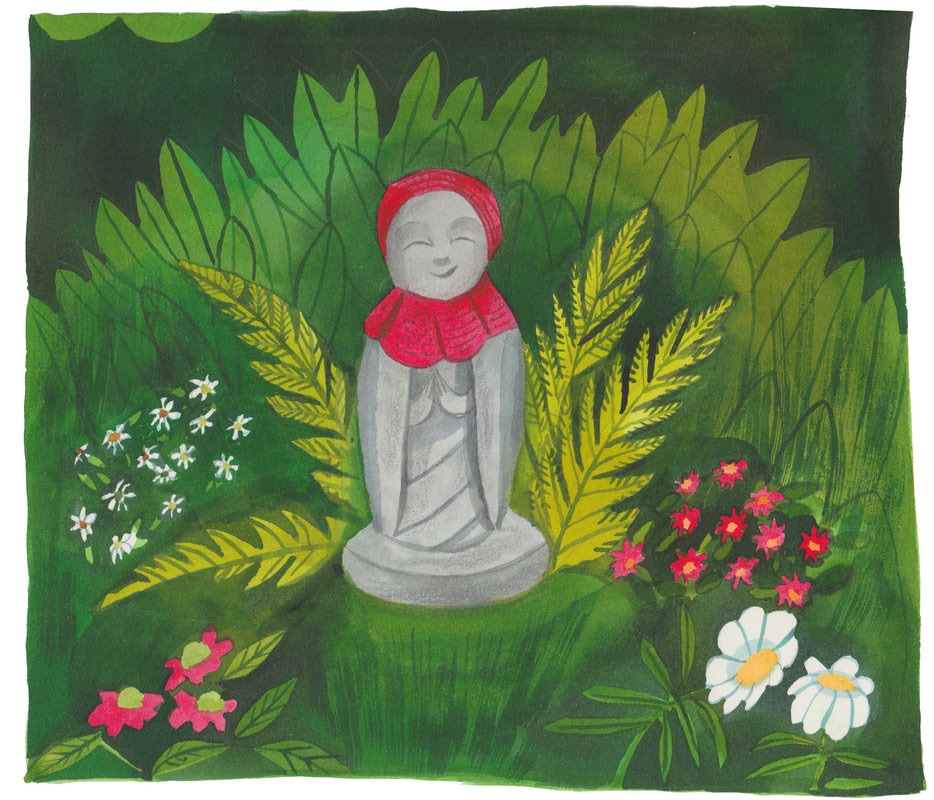
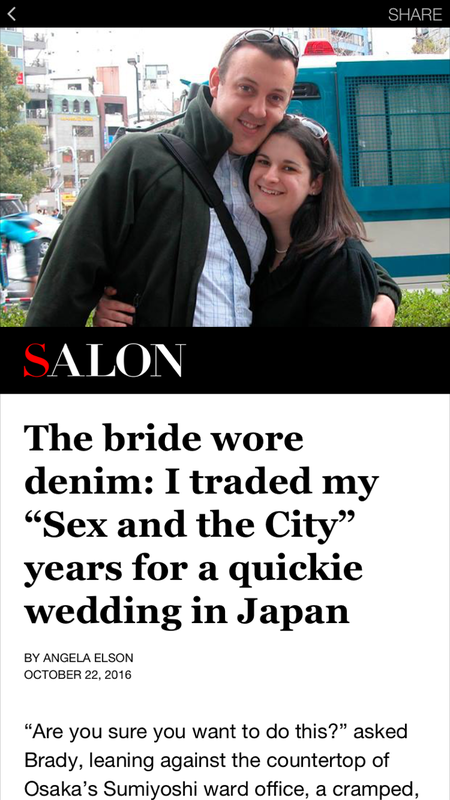
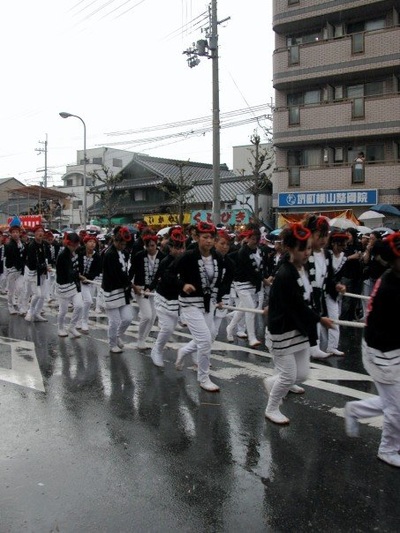
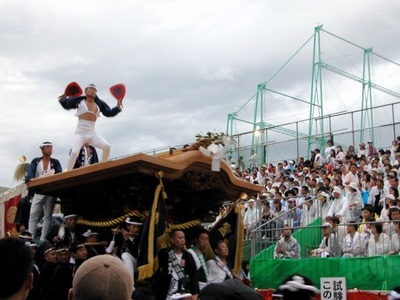
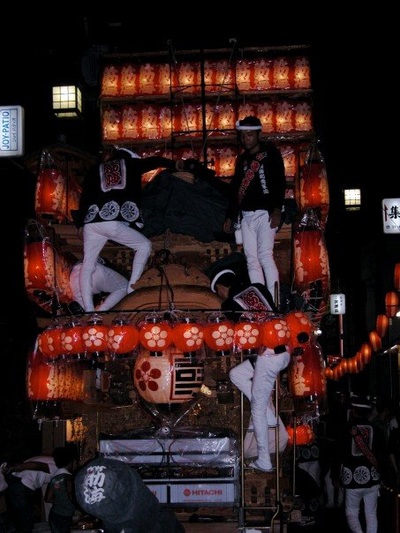
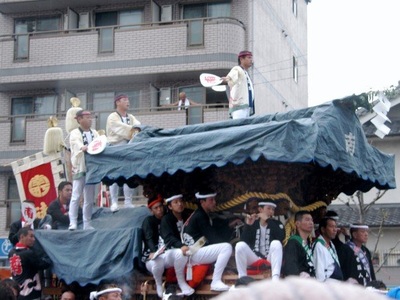
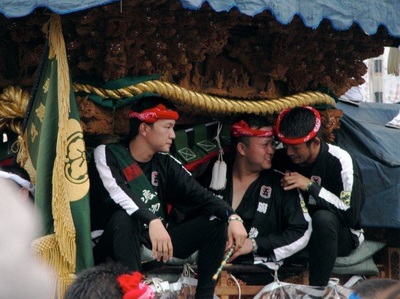
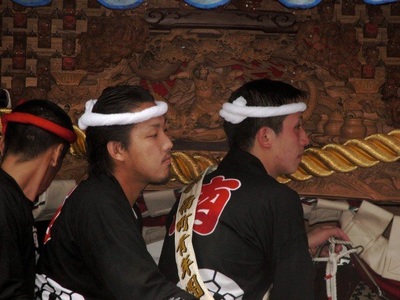
 RSS Feed
RSS Feed